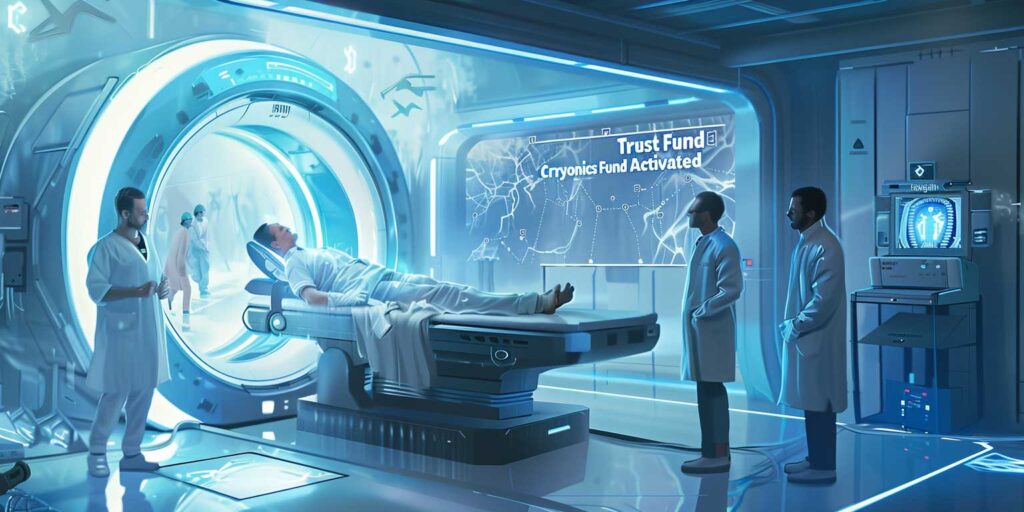
If you’re one of the growing number of individuals who have chosen cryonics as a path to a possible future revival, then you’ve already made a profound bet on the promise of medical progress. But while you may have made arrangements to be cryopreserved, there is one crucial piece many overlook: What happens after revival? Who pays for your rehabilitation, housing, and reintegration into a world that may be radically different from the one you left behind?
That’s where a cryonics trust—sometimes called a revival trust—comes in.
What Is a Cryonics Trust?
A cryonics trust is a legal and financial arrangement created to hold and grow assets over potentially very long periods—100, 200, or even more years—with the explicit purpose of supporting your needs after revival from cryonic suspension. These trusts can also play an important role in funding cryonics-related research or providing ongoing support to the organization preserving your body.
At its core, a cryonics trust is your bridge to the future.
Why You Might Need One
Many people assume that the cost of cryopreservation covers everything. In reality, the fees you pay cryonics providers cover your suspension, long-term storage, but not necessarily all you will need for your reanimation, rehabilitation, or support after revival. A cryonics trust can:
- Provide you with funds to live on after revival—for food, housing, medical care, legal identity, and personal autonomy.
- Pay for revival or rehabilitation efforts once feasible technologies exist.
- Incentivize researchers and institutions to pursue revival by offering performance-based compensation.
- Support cryonics research through charitable contributions to nonprofit institutions focused on revival and reintegration technologies.
- Protect your revived self from poverty, exploitation, or institutional dependency in an unfamiliar world.
Key Features of a Well-Designed Cryonics Trust
A cryonics trust must be built to withstand the test of time—and potential legal, economic, and institutional changes. Important elements include:
- Aggressive, long-term investment strategies focused on capital growth over decades or centuries.
- A trust protector—a person or committee with authority to amend the trust, oversee the trustee, and approve funding for revival attempts.
- Clear revival criteria and reintegration plans, defining what success looks like and how assets should be distributed after revival.
- Charitable funding provisions, often 1% per year, to support cryonics-related research or nonprofits designated by your preservation provider.
- Successor planning, including what happens to your assets if revival proves impossible (many choose to donate the remaining funds to a personal cause or foundation).
Who Can Set One Up?
Anyone seriously invested in their cryonics plan should consider establishing a trust. Whether you are in your 30s or your 70s, the earlier you start, the more time your assets have to grow. While you can create a trust at any time, the most effective cryonics trusts are:
- Irrevocable upon death
- Funded during your lifetime, not left to chance through estate administration. Cryonics trusts are revocable until death, which means you are free to add or remove funds according to your wishes.
- Legally enforceable under a favorable jurisdiction (such as Florida, Nevada, or Alaska)
A Personal Note
As someone who has chosen the Cryonics Institute as my cryonics provider and is actively working to establish a cryonics trust, I can tell you firsthand the process is both empowering and sobering. It’s not just about preserving the body; it’s about preparing for a second chance at life—whenever that may come. A cryonics trust is not just a financial tool; it’s a declaration of hope and foresight.
Final Thoughts
Cryonics is, by its nature, a long-term bet on science, ethics, and humanity’s ability to care for its own across generations. A cryonics trust is your way of ensuring that, if you make it back, you do so with dignity, resources, and a future worth waking up to.
If you’re serious about cryonics, it’s time to get serious about your trust.
────────────────────────────────────────────
About the Author
Steve LeBel is a retired hospital CEO and an advocate for cryonics preparedness and planning. He is signed up with the Cryonics Institute and works to bridge the gap between end-of-life care and timely cryopreservation.
steve@stevelebel.com
https://stevelebel.com
────────────────────────────────────────────